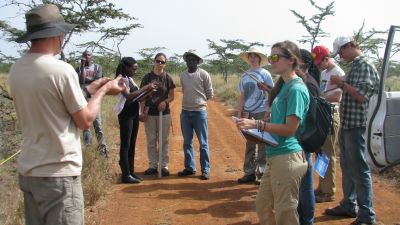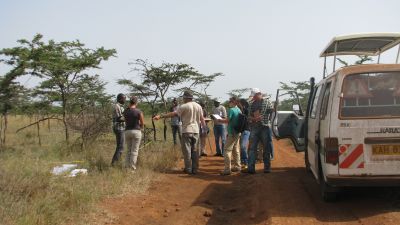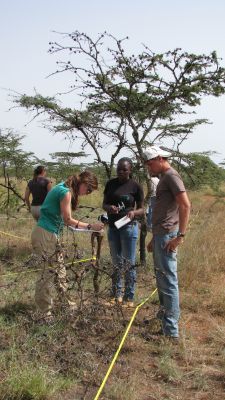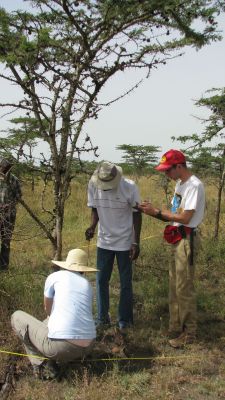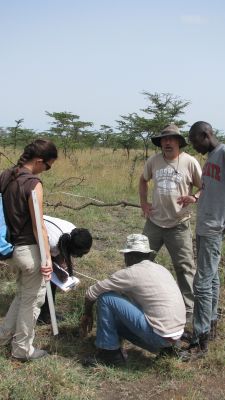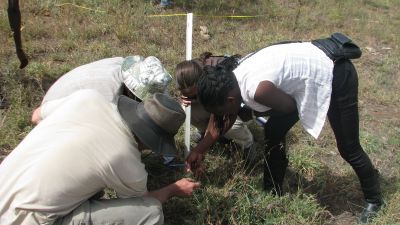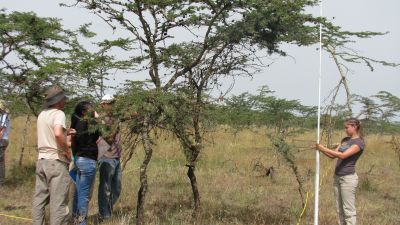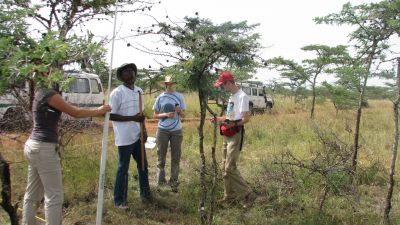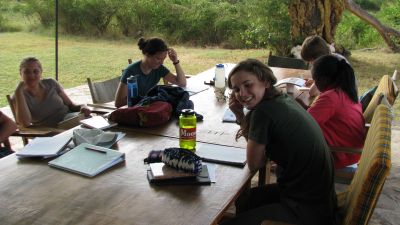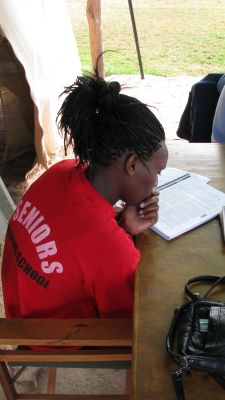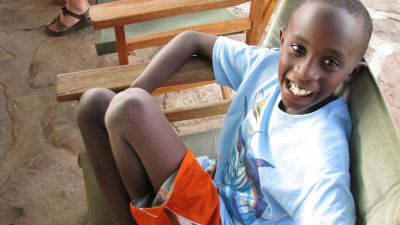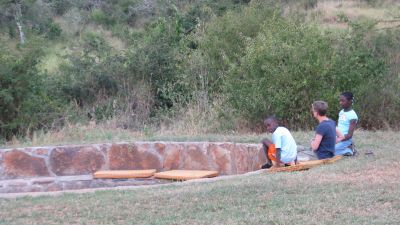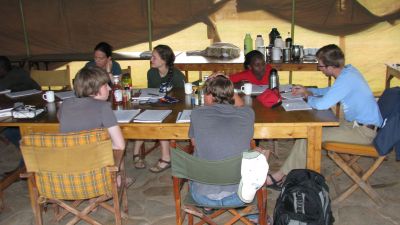For the last two days students have been quantifying whether elephants forage on trees more in burned sites than in unburned sites. Two students’ blogs are included here from Monday and Tuesday.
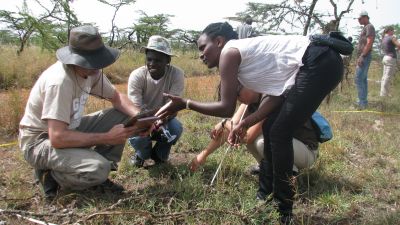
Monday – Hi, the Goshen College fraternity, my name is Erick Omollo, one of the Kenyan university students who got the opportunity to be part of your students field research study in Kenya. As I write to you now, we have just finished our lunch break. As usual we woke up early enough and then had our delicious breakfast, the time during which we also had the morning reflection presented by Will (Goshen College) and the animal species, wild dog by Dedan (Karatina University, Kenya).
Thereafter we left for the field research work for the day at the KLEE-Burn site under the leadership of the resourceful Professor Ryan. This was also accompanied by studying and watching birds and other beautiful provisions of nature in this complex ecosystem. This actually happened to be one of the most enjoyable days so far.
Later in the day, we had discussions in relation to our field research findings, after which we had a break where me and a few other soccer lovers had a moment to show our talents to each other, seriously it was fabulous. Later after dinner, we again had another fine moment of conversation around the fire point, from where we got a motivating talk by one of Prof. Ryan’s friends, Siva, who talked to us about his research on zebras.
A great day it was, we long for more of the kind. – Erick Omollo, Junior Range Science Major, University of Nairobi
Tuesday – To start off the day the group went to Kenya Long-term Enclosure Experiment location, also known as KLEE, where burned and unburned savanna sites have been created. We examined the elephant influence in each location, in addition to many other factors such as tree height and diameter. Our observations took place in several 5 meter by 30 meter transects. While on this excursion we witnessed the mutualistic behavior that exists between the acacia trees and the several ant species, of the Crematogaster genus, that live within them. The tree provides habitat for the ant and the ants provide protection. We also used dung transects within the two separate sites to determine previous animal presence.
In the afternoon we continued our discussion of savanna life by teasing apart the relationships between grazers and browsers and how savannas are able to support such a large amount of herbivorous life. With guidance from our fearless instructor, we concluded that the metabolic differences that exist between different sized animals, in addition to differing digestive techniques, separate niches have formed in the savanna habitat allowing for the plethora of life. The final lesson of the day was to then consider what ecological impacts would occur if humans were to alter the habitat of savannas, one specific example being to limit the amount of savanna burning that occurs. It was decided that such manipulation of the savanna would result in the loss of many animals, since the burning of the savanna allows for the cycling of nutrients back into the soil and provides different nutrient levels so that an increased numbers of niches can exist.
After our thoughtful and mentally taxing discussion we then were able to start busily recording the day’s events into our class journals and then finish the day relaxing by the fire ready for another day in the life of a Kenyan savanna ecologist. – Will Kanagy, Senior Biology Major, Goshen College





